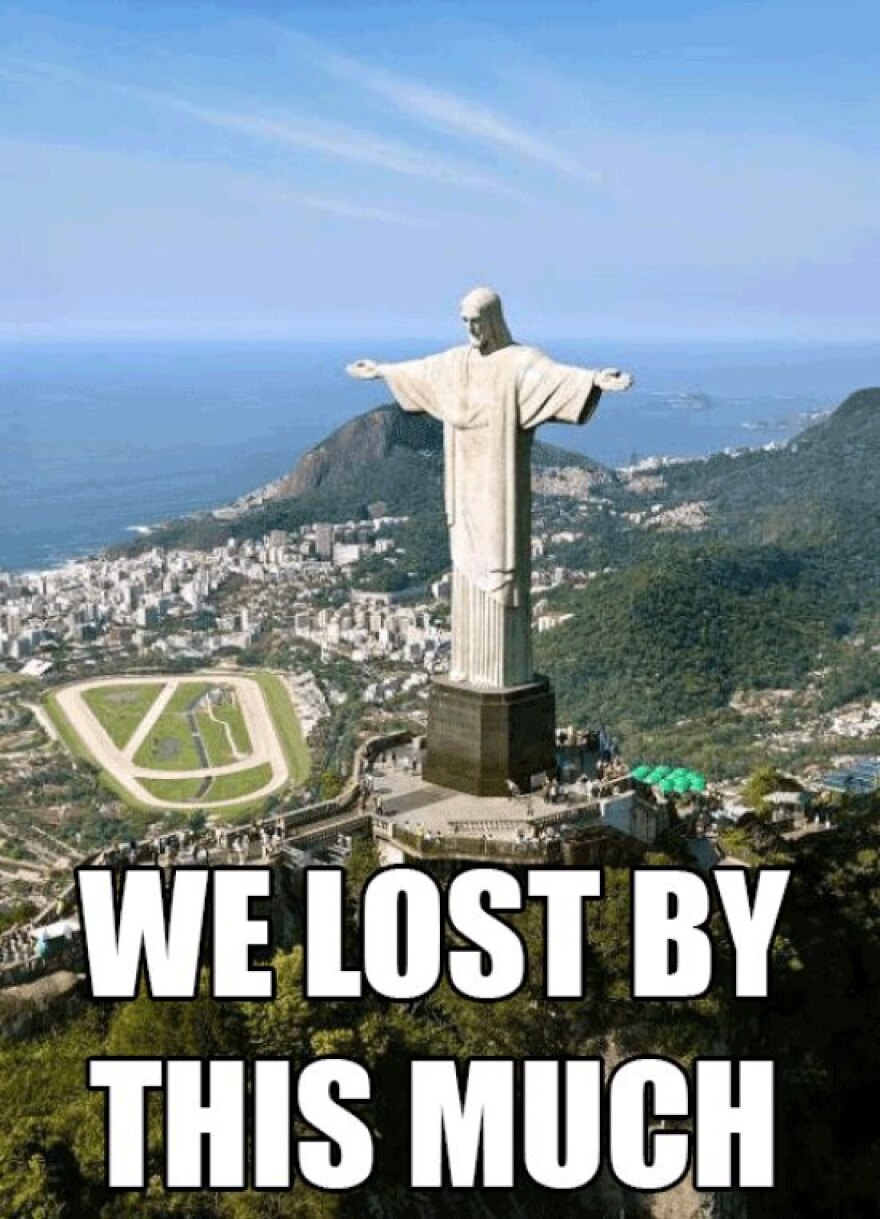The 7-1 victory by Germany over Brazil in the World Cup generated the most activity around a single sports game on Twitter ever.
Over 35-and-a-half million tweets during the game itself, and at peak volume, nearly 600,000 people were tweeting about it at the same time.
Compare that to the Superbowl this year. There were nearly 25 million tweets during the game, with a max frequency of around 382.000 tweets per minute.
And the massive conversation about Brazil's most embarrassing moment wasn't just on Twitter.
This lop-sided s0ccer match was really a world wide media event.
"Absolutely. And by media event we're talking every single possible media platform was inundated with information about Germany's defeat of Brazil," said Kelly McBride of the Poynter Institute's Sense Making Project. "Front pages around the world got very, very creative. My favorite headline -- New York Times: "Goal, Goal, Goal, Goal, Goal, Goal, Goal. And Brazil's Day Goes Dark." On television, six-and-a-half million viewers on ESPN made it the highest rated, most viewed World Cup semi-final in American history. Almost six million viewers on Univision. in Germany, 32.6 million viewers. Everybody in Germany was watching television."
The big question, of course, is why was everybody world wide so tuned in to what was -- essentially -- a blowout of a soccer match?
"Wow. Why? That's such a difficult question," McBride said. "It was scheduled right? We knew. It's a soccer game. It's going to happen at a certain time period. But no one, nobody, predicted this outcome."
We can say that the whole world was watching this most embarrassing moment for Brazil. But if you drill down into the social media numbers, you get the idea that a lot of younger people were doing the most talking about it.
"On Facebook, the top demographics were male demographics. First the 18-24 age group and then the 25-34 age group," explained McBride. "But the number three and four demographics on Facebook talking about this event were women 18-24 then women 25-24. The great about thing is it was equally interesting for both men and women."



